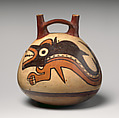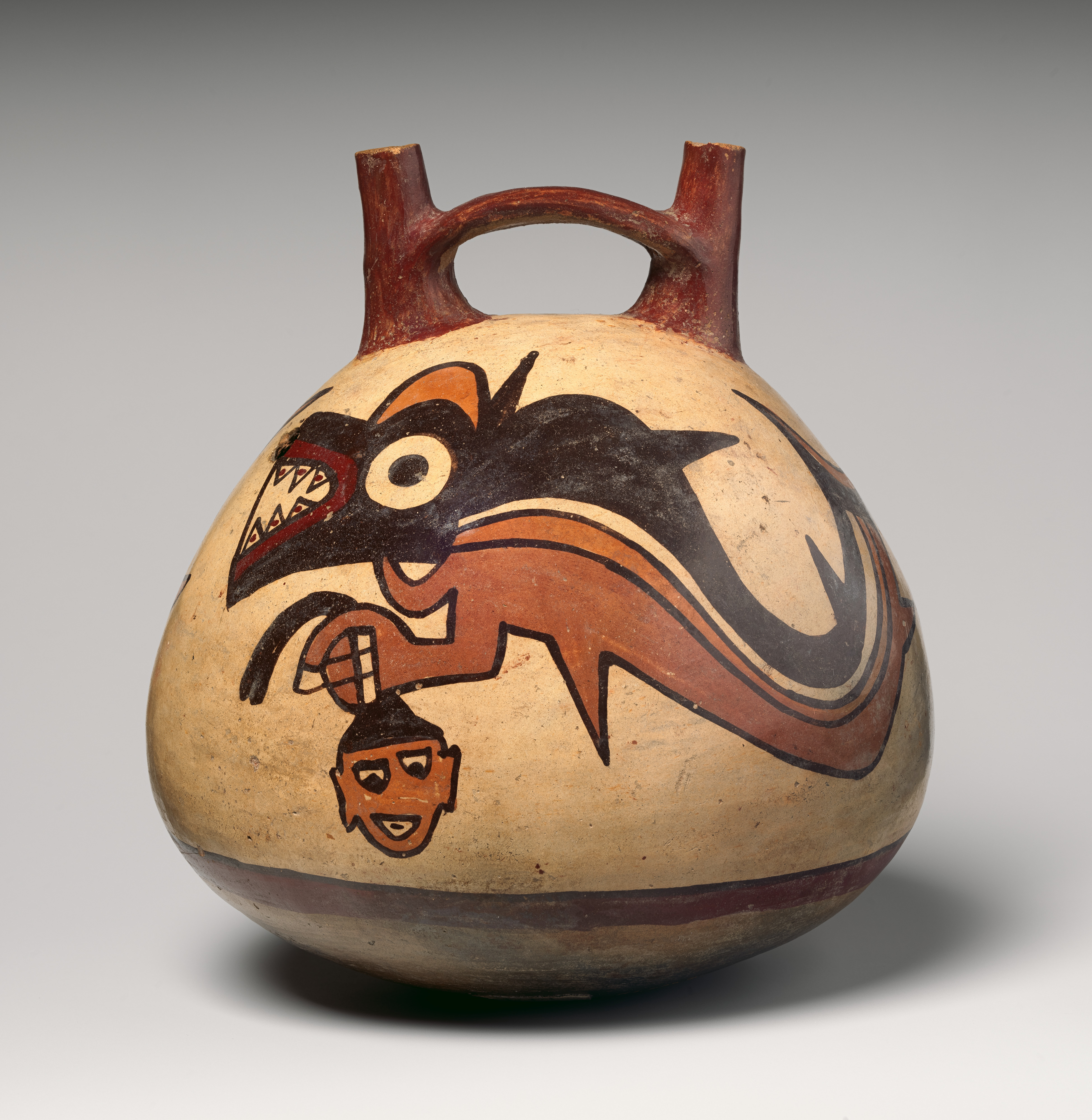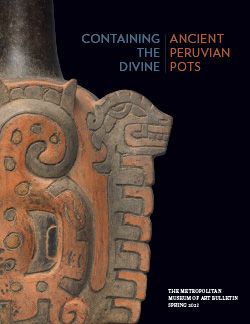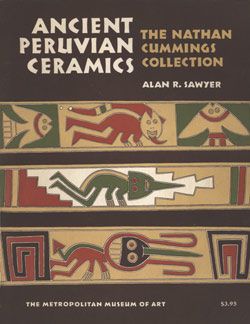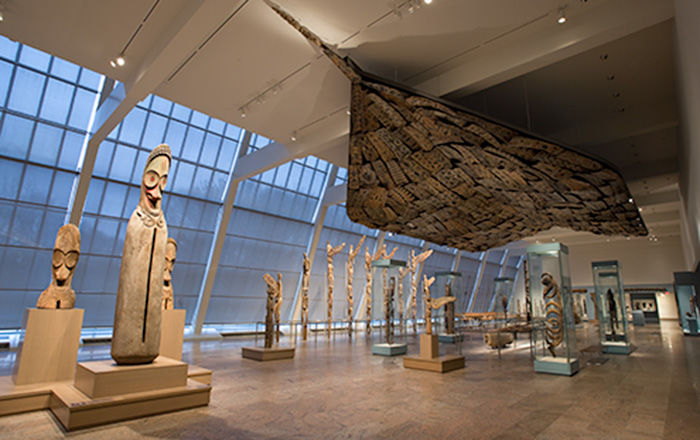Double-spout bottle with shark
Not on view
This bottle was crafted in the Nasca style, the dominant artistic tradition of the South Coast of Peru between 1 and 600 CE. The ceramic depicts a marine animal, repeated once on each side. The fins, the lateral lines, and the two contrasting colors of the body suggest that the painter was inspired by sharks. In one of the images, the creature is shown with clenched teeth and empty handed. On the opposite side, by contrast, the shark is depicted with open jaws, its pointed teeth in full display. Red dots on each tooth suggest blood, as if the animal just finished an attack on its prey. The shark carries a disembodied human head by the hair. The use of multiple colors, outlined in black against a cream background, and the creature’s large, round eye, and the curved body create a vibrant, eye-catching image.
In many ways, the Nasca style is a continuation of the earlier Paracas style, but Nasca artists distinguished their work through the use of colorful slips, watery mixtures of clay and pigments, applied before firing, thereby permanently fixing the color to the ceramic surface. A delicate sheen was achieved by burnishing the surface with a stone polisher or similar implement before firing, while the ceramic surface was still relatively moist. Nasca artists depicted animals, plants, people, and supernatural beings with in great detail, including distinctive hair styles, nose ornaments, and elaborate clothing. These fine polychrome ceramics were used in ceremonies attended by hundreds of people, who transported these vessels back home as prestige items and as carriers of religious knowledge.
Hugo C. Ikehara-Tsukayama, Andrew W. Mellon Curatorial/Collection Specialist Fellow, Arts of the Ancient Americas, 2022
References and Further Reading
Carmichael, Patrick H. "Nasca Origins and Paracas Progenitors." Ñawpa Pacha, Journal of Andean Archaeology, vol. 36, no 2 (2016), pp. 53-94.
Lapiner, Alan C. Pre-Columbian Art of South America. New York: H. N. Abrams, 1976.
Pardo, Cecilia, and Peter Fux. Nasca. Lima: Museo de Arte Lima, 2017.
Proulx, Donald A. "Paracas and Nasca: Regional Cultures on the South Coast of Peru" in Handbook of South American Archaeology, edited by Helaine Silverman and William Isbell, pp. 563-84. Springer Press, 2008.
Proulx, Donald A. "Ritual Uses of Trophy Heads in Ancient Nasca Society" in Ritual Sacrifice in Ancient Peru, edited by Elizabeth Benson and Anita Cook, pp. 119-136. Austin: University of Texas Press, 2001.
Proulx, Donald A. A Sourcebook of Nasca Ceramic Iconography: Reading a Culture Through its Art. Iowa City: University of Iowa Press, 2006.
Sawyer, Alan Reed. Ancient Peruvian Ceramics: The Nathan Cummings Collection. New York: The Metropolitan Museum of Art, 1966.
Kevin J. Vaughn, "Craft and the Materialization of Chiefly Power in Nasca," in Foundations of Power in the Prehispanic Andes, edited by Kevin J. Vaughn, Dennis Ogburn, and Christina A. Conlee. Archeological Papers of the American Anthropological Association, No. 14, pp. 113-30. American Anthropological Association, 2005.
Published
Wassermann-San Blás, Bruno John. Céramicas del antiguo Perú de la colección Wassermann-San Blás. Buenos Aires: Bruno John Wassermann-San Blás, 1938, no. 573, pp. 347.
Sawyer, Alan Reed. Ancient Peruvian Ceramics: The Nathan Cummings Collection. New York: The Metropolitan Museum of Art, 1966, no. 205, pp. 124.
This image cannot be enlarged, viewed at full screen, or downloaded.
This artwork is meant to be viewed from right to left. Scroll left to view more.
